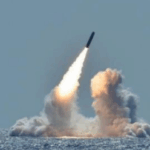
A compromise version of the National Defense Authorization Act, released Tuesday and awaiting votes in both chambers of Congress, would authorize funding for Department of Energy nuclear weapons programs at or above the requested level for fiscal year 2022. In the bill, DoE's semi-autonomous National Nuclear Security Administration (NNSA) would get $20.3 billion: half a billion dollars more than the roughly $19.7 billion requested, nearly all of which is for the Weapons Activities portfolio. The biggest winners at NNSA would…

 By
By 











